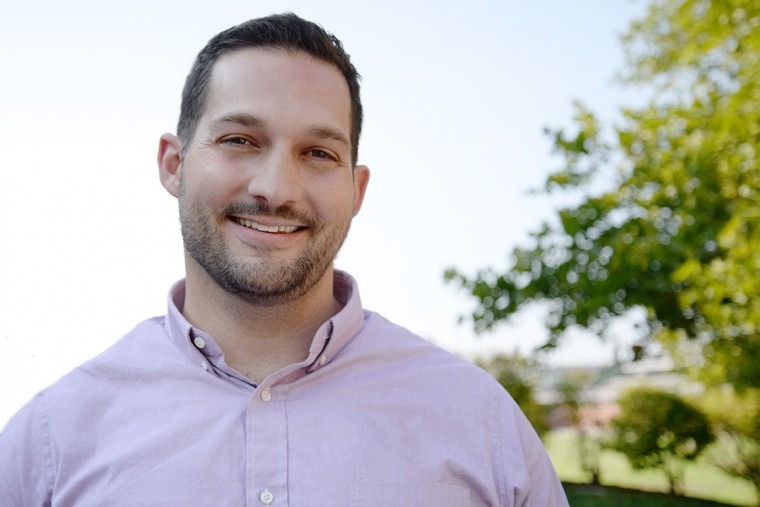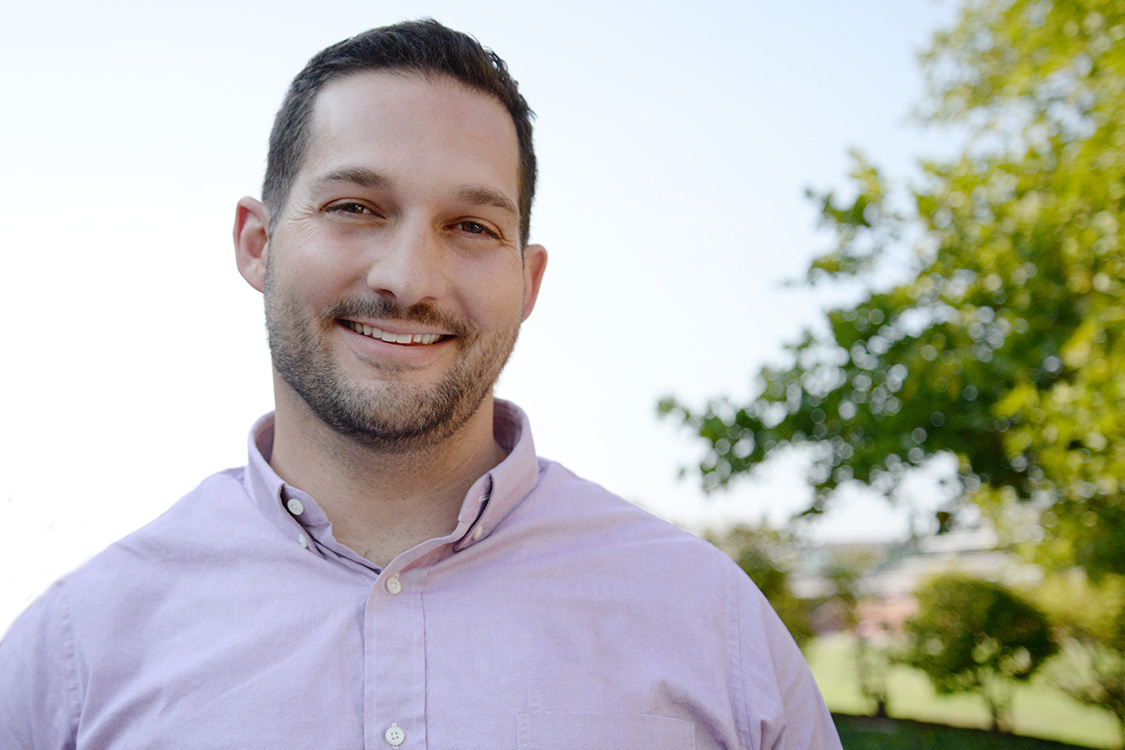Naecker an Expert on Behavioral, Experimental Economics


In this News @ Wesleyan story, we speak with Jeffrey Naecker, a new member of Wesleyan’s Economics Department.
Q: Welcome to Wesleyan, Professor Naecker! Where are you from?
A: I grew up in beautiful and sunny Pasadena, Calif. I was also educated in California, first doing my bachelor’s degree at Berkeley and then my Ph.D. at Stanford. Wesleyan is my first job after graduate school, and my first experience living on the East Coast. I’m excited to try out this “winter” thing I’ve been hearing about!
Q: And what drew you to Wesleyan’s Economics Department?
A: I knew throughout graduate school that I wanted to be able to do work on the topics of my own choosing, and also teach economics to bright students. The economics department here offered me the freedom and resources to work on my research agenda, as well as the chance to create courses that interest me and are useful and relevant for the students here.
Q: What has been your impression so far of the Wesleyan community?
A: The entire faculty at Wesleyan is incredibly impressive: producing well-published research while also teaching rigorous classes to extremely intellectual students. I’m honored to have a chance work with everyone here. My colleagues have also been very curious and supportive of my research, as well as offering lots of helpful tips on teaching and dealing with newfound responsibilities. Overall, Wesleyan reminds me a lot of my undergraduate time at Berkeley: smart, athletic, and socially engaged students on a purposefully inclusive and socially active campus.
Q: What courses are you teaching this semester, and what do you plan to teach in the future?
A: I am teaching a core course, intermediate microeconomics, that is one of the gateway courses to the major. Students learn how to analyze and predict behavior of consumers and firms in markets using supply and demand, and of players in strategic environments using game theory.
I am also teaching a field course on behavioral and experimental economics, which are my primary areas of research. That class has been extremely well-received by the students, and I will teach a version of it every semester. In this class, students essentially question all of the assumptions they learn in my core course. It’s a very fun and challenging dichotomy to teach the standard theory in the morning and then poke holes in it that afternoon.
Q: What is behavioral and experimental economics? Is it a relatively new field?
A: They are really two separate but heavily intertwined fields. Experimental economics is a methodology: the researcher’s goal is to test economic theories through experiments involving human decision-making. These experiments are often conducted in a controlled environment such as a computer laboratory, though recently we have run more and more experiments in classrooms, workplaces, or even online.
Experimental economics really took off about 40 years ago, when researchers wanted to test the “classical” theories of decision-making and markets, which assumed that the participants in the experiments were perfectly rational and purely self-interested. Unsurprisingly, these theories sometime made predictions that were in wild disagreement with the data coming out of these studies, and this forced economists to reconsider their assumptions. The field concerned with modifying or updating economic theory with insights from experiments (and heavily influenced by psychology and neuroscience) is what we call behavioral economics.
Q: The topics you research appear to be quite varied. How do you choose these topics? Why is economics a good lens through which to study them?
A: I’ve always been interested in how and why people engage in pro-social behavior. How generous or other-regarding people are, and how they express these desires, varies quite a lot across societies and contexts. Once I began studying economics, I saw that it offered the analytical tools to do two things that are essential to the scientific method: first, generate new theories about pro-sociality and second, test those theories using experiments and naturally-occurring data.
Q: I understand some of your recent research looks at organ donation registration behavior. What did you learn, and how might your findings be applied to increase registration?
A: First, let me say that we are in dire need of organ donors in the United States. Well over 100,000 people are waiting for an organ, and about 10,000 new people are added to that list each year. However, several thousand people on that list will die each year before we can locate a suitable match for them. So if you’re not a donor already, please consider signing up at http://donatelifenewengland.org/register/.
Many people who become donors these days designate themselves at the DMV when they apply for or renew their driver’s license. There are typically two ways they ask you if you’d like to be a donor. The form can have a single checkbox, which you check if you want to be a donor and leave blank otherwise; this is called “opt in” choice framing. Alternatively, some states force you to respond explicitly yes or no on the form; this is called “active” or “forced” choice framing.
Some economists have suggested that opt-in framing might “miss” some people who fill out the form and want to be donors, but don’t see or understand the question. Active choice should in theory “catch” these people by forcing them to consider the question and respond, leading to more donors in the registry. However, testing this idea is really difficult because states rarely change their forms, and it’s statistically challenging to make a comparison between states that use the two different choice framings.
My research on this topic, which builds on techniques I’ve developed with several coauthors in other research projects, uses hypothetical and subjective responses to survey questions about organ donation. Using these response, I simulate the effects of the ideal experiment, which would be randomly assigning one of the two choice framings to people in every state. This methodology predicts that in fact active choice framing, not opt-in, should lead to more donors signing up. This is a surprising result, but it has been confirmed by other researchers using entirely different methods.
Q: Please tell us about some of your research in progress. What studies would you like to highlight?
A: Here’s a little mental experiment: Suppose I give you $10 and tell you that you can split it however you choose between two poor households in Kenya that I’ve identified. After you tell me how you’d like to allocate the money, I’ll flip a coin. If it’s heads, I’ll allocate as you asked. But if it’s tails, I’ll allocate differently: all $10 to household A and none to household B. So, how would you like to split the money?
Here’s the twist: Suppose that I’ve flipped the coin and it came up heads, so I’ll implement your allocation. But first, I double-check with you before implementing it. Do you want to change your allocation?
In a paper I’m writing right now with several co-authors, we show in a series of experiments that many people choose $0 to A and $10 to B initially — they are offsetting the default allocation. But after the coin flip, many people want to switch to an equal split: $5 each. It turns out this behavior is hard to explain with standard economic theories. Put another way, we as economists are still learning about how people define fairness, and how the definition depends on the context and the timing of the decision.
Q: What do you like to do outside of work?
A: Teaching and research take up a ton of time, of course, but I do enjoy getting exercise whenever I can: swimming, for example, or hikes with my wife. We’re very excited about exploring Connecticut’s natural beauty. And of course, when we’re done being active we love to cook and eat, so we’ve been visiting local farmer’s markets and restaurants. Other hobbies include practicing martial arts (I have a brown belt in Judo), playing guitar and bass, and doing digital photography.

